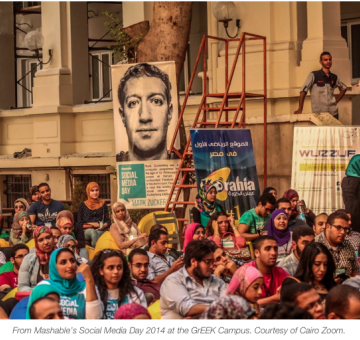Why Do Startups In Egypt Suffer? (Part 2/2)

In part 1 of this article, readers got to know about Hofstede, his theory, and the power distance index. Now in this second part of the article, readers will get to know the relation between Hofstede’s power distance index and the startups, and how to use it for marketing. The article is highlighting certain examples so that readers can easily relate and apply on their own cases.
Hofstede presented a set of analytical studies on this subject, as well as many well-known scientists in this field including the Spanish scientist Moore.
One of the most important analyses of this index is that there is a strong relationship between the rise of the score of the index in a country and the trust in the brands or the strength of the branding of the products.
The higher the value of the index in a country's culture, the more people will search for popular and well-known products. They’ll look for the name of the producing company before considering the quality of the product itself or its specifications.
You’ll also find that loss of trust in any brand means that this brand had fallen out from the consumer’s consideration for a long time and there is no way to get back this trust easily in the cultures with high score of power distance index.
This point is considered a big obstacle in front of startups in Egypt because as small companies they’re still searching for a good name for themselves in the market, so they’re exposed to losing their costumers easily if the product faced any shake in the market or any bad counter propaganda. And this means that all startups in Egypt, or in any similar market in terms of the power distance index (all Arab countries have high score in the power distance index, Saudi Arabia’s score is 95 while United Arab Emirates and Kuwait’s score is 90), need a powerful brand in a very high speed to be able to stay in the market. And it’s sufficient to sit with any marketing expert in the Egyptian market to find him say “Egyptian customers love brands”.
What can we learn from the Japanese and Koreans in this regard?
Japan, Korea, and China have high score in the power distance index (54, 60, and 80 respectively), so you’ll find that the Japanese and Korean ads targeting their markets focus heavily on the logo and the brand. And as an example, compare the following two ads: The first one is targeting the American consumer and the second one is targeting the Chinese consumer.
Compare between the duration of appearance of Sony’s logo in the two ads, you’ll find that the logo has appeared in almost all shots of the Chinese advertisement and in at least 15 seconds of the 30-seconds ad, while the logo has only appeared in the last 2 seconds of the American advertisement.
And this indicates the amount of attention all marketers in each country give to Hofstede’s index study with using it in the marketing materials and advertisements.
Another example to look into is Toyota Corolla’s brochure in both the United States and in China. Compare between the number of times “Toyota Corolla” was written in the American brochure and the Chinese brochure. In the American brochure, you’ll find that the word Corolla wasn’t written except once in the beginning and the word Toyota wasn’t mentioned at all, while in the Chinese brochure the two words Toyota and Corolla are mentioned in almost every page. Also Toyota’s distinctive logo is shown with all strength and clarity in the Chinese brochure, while the American brochure focuses more on the car’s features and the technology used and the internal capacity and the fuel consumption rates, without any focus on the logo or the brand name.
This is simply what Hofstede’s power distance guides us to, and therefore every Egyptian company should study this index with extreme concentration and intensity, whether it was for Egyptian market or any other international market.
The same advertising and marketing message should not be used across all countries and cultures, but the product should be presented in each country in proportion to its culture and its place in the power distance index. This graph shows the comparison between different countries and cultures on the power distance index.

This article was translated in English by Allaa Ghanem






































































EgyptInnovate site is not responsible for the content of the comments